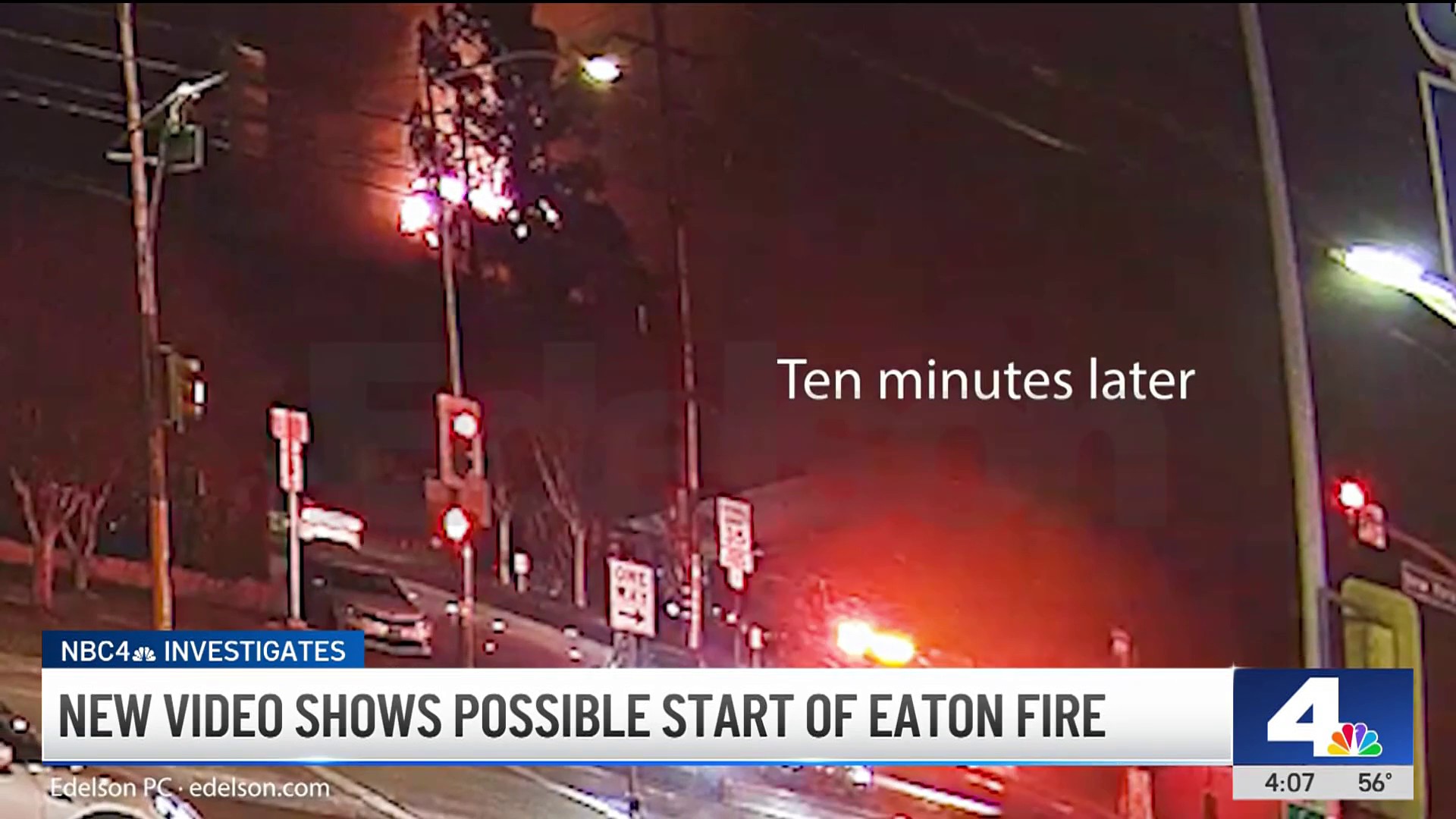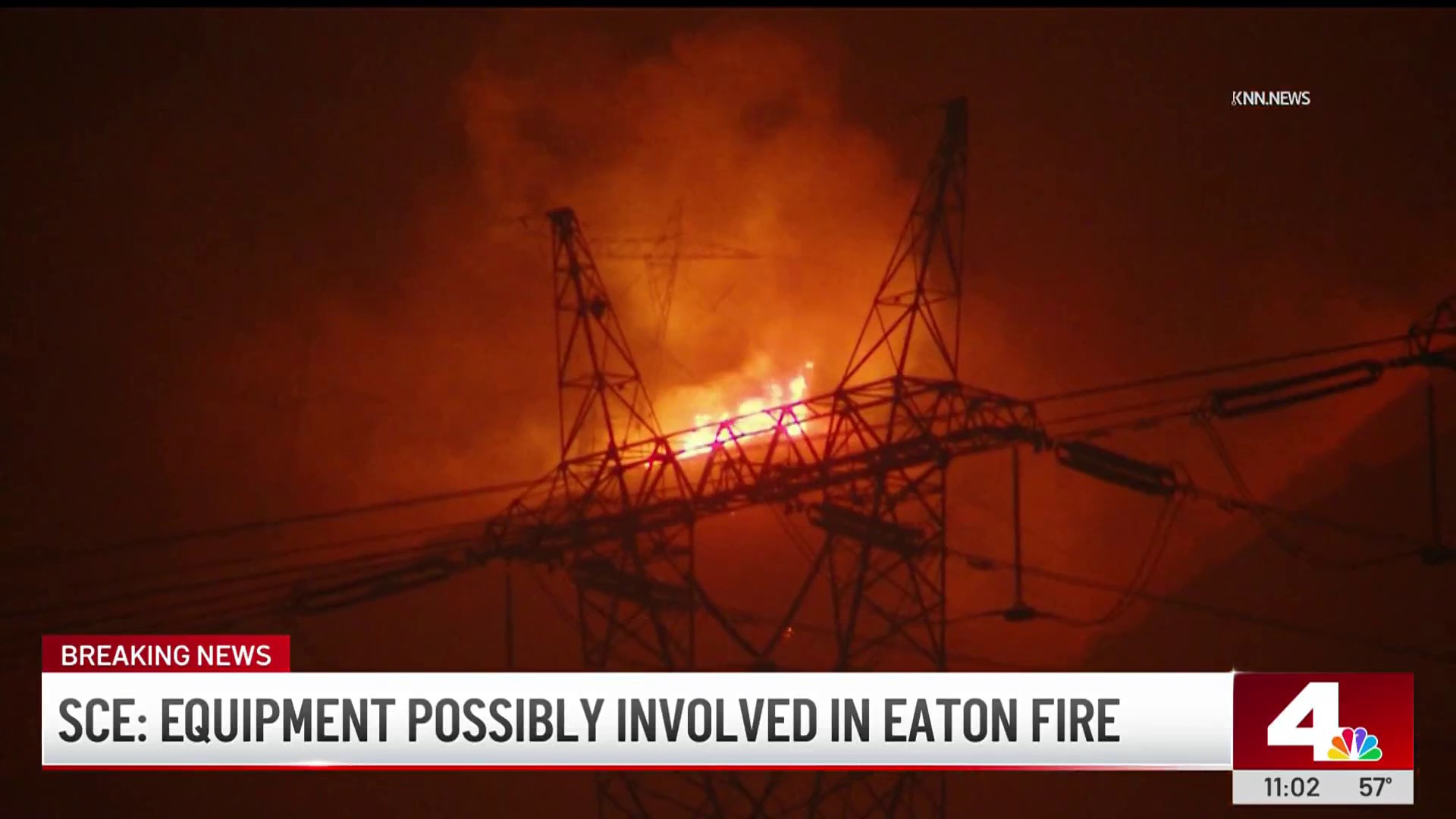Southern California Edison said in a regulatory filing Thursday that it was exploring the possibility a decommissioned electrical circuit, that runs parallel to its high voltage transmission lines above Altadena, could have been momentarily electrified during high winds when the Eaton Fire was ignited.
“SCE is evaluating a number of potential causes, including whether the idle Mesa-Sylmar transmission line could have become energized,” it said in an update sent to the California Public Utilities Commission.
The defunct Mesa-Sylmar line stretches miles through the Angeles National Forest and terminates on a metal tower -- adjacent to two larger towers -- on a ridge that’s been determined by fire investigators to be the area of origin for the Eaton Fire, which started just after 6:00 p.m. on January 7.
A new cellphone video clip, obtained by NBC Los Angeles from a source who declined to be identified publicly, was recorded at 6:14 p.m. from different position than most other videos of the first moments of the fire, and it appears to show flames directly below the decommissioned tower, not the newer, taller towers that carry live 220,000 volt transmission lines.
Get top local stories in Southern California delivered to you every morning. Sign up for NBC LA's News Headlines newsletter.
“One would not expect a non-energized line to come to life,” said electrical engineer Ken Buske, who’s investigated more than 1,000 fires, but he explained they can become electrified through a phenomenon called induction.
He said inducted electricity in the dead Mesa-Sylmar lines wouldn’t be hazardous so long as it was properly grounded, but said if the grounding connection wasn’t proper, or if it had deteriorated, it could be the source of heat and sparks on the tower close to where the fire started.
“The induced current can cause arcing through a bad connection, so you can have arcing that causes a fire if the grounding isn’t proper even though the line’s dead,” Buske said.
Eaton Fire investigation
Edison raised that possibility in its Thursday filing, saying it was exploring the induction phenomenon and, “…the extent to which that line or its grounding could be related to the cause of the fire.”
SCE said in the document that it inspected the Mesa-Sylmar line each year between 2020 and 2024, and said photographs taken before and after the fire didn’t show, “obvious,” signs of sparking or arcing on the tower, labeled, “M16T1.”
“SCE will learn more once it can examine the equipment related to the M16T1 structure more closely, including in a laboratory setting,” it said.
It wrote that another tower at the other end of the Mesa-Sylmar line showed, “signs of potential arcing and other damage on the grounding equipment for two of the three idle conductors,” but said it did not know when that damage occurred.
SCE said last month that it had not detected faults or anomalies on its high-voltage transmission lines in Eaton Canyon for the 12 hours prior to the ignition of the Eaton Fire.
The company is facing dozens of lawsuits from fire victims that allege Edison should be held liable for causing the fire.



